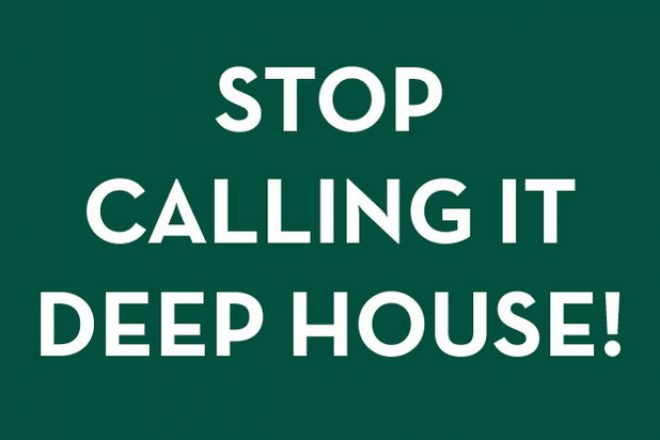
El verdadero deep house es como el porno: sabes que es porno cuando lo ves, por más que definirlo sea un tanto más complicado. Así pues, realmente es muy poco el deep house que pasa la prueba y un putero el que está en lado pinchón del asuntillo.
Mucho de la culpa la tiene Beatport y la peña EDMera, la neta es que le dicen deep house a cualquier chingadera mientras que puristas como Dj Sprinkles dicen cosas como:
“House isn’t so much a sound as a situation.
There must be a hundred records with voice-overs asking, “What is house?” The answer is always some greeting card bullshit about “life, love, happiiness….” The House Nation likes to pretend clubs are an oasis from suffering, but suffering is in here with us. (If you can get in, that is. I think of one time in New York when they wouldn’t let me into the Loft, and I could hear they were actually playing one of my records on the dance floor at that very moment. I shit you not.)
Let’s keep sight of the things you’re trying to momentarily escape from. After all, it’s that larger context that created the house movement and brought you here. House is not universal. House is hyper-specific: East Jersey, Loisaida, West Village, Brooklyn – places that conjure specific beats and sounds. As for the sounds of New York dance floors themselves, today’s house classics might have gotten worked into a set once in a while, but the majority of music at every club was major label vocal shit. I don’t care what anybody tells you. Besides, New York Deep House may have started out as minimal, mid-tempo instrumentals, but when distributors began demanding easy selling vocal tracks, even the label “Strictly Rhythm” betrayed the promise of it’s own name by churning out strictly vocal after strictly vocal. Most Europeans still think “Deep House” means shitty, high energy vocal house.
So what was the New York house sound? House wasn’t so much a sound as a situation. The majority of DJ’s – DJ’s like myself – were nobody’s in nowhere clubs: unheard and unpaid. In the words of Sylvester: reality was less “everybody is a star,” and more “I who have nothing.”
Twenty years later, major distribution gives us Classic House, the same way soundtracks in Vietnam war films gave us Classic Rock. The contexts from which the Deep House sound emerged are forgotten: sexual and gender crises, transgendered sex work, black market hormones, drug and alcohol addiction, loneliness, racism, HIV, ACT-UP, Thompkins Sq. Park, police brutality, queer-bashing, underpayment, unemployment and censorship – all at 120 beats per minute.
These are the Midtown 120 Blues.”
Así pues, si le quieren entrar al deep house de a devis, lo más sencillo es escuchar el único mix comercial de Sprinkles: Where Dancefloors Stand Still, editado por Mule Musiq. Mientras tanto, dense mi playlisto:
uno de mis tracks favoritos de TODA la vida, un clásico del verdadero deep que luego fue sampleado por The Juan Maclean.
Si alguien sabe de este género, es Francois K y este mix del proyecto lateral de Arthur Russell es increíble.
Este vato es EL PAPÁ DE LOS POLLITOS, estoy hablando de Larry Heard y sus proyectos.
El genio de Sasu Ripati (Vladislav Delay) haciendo deep house como los mejores, sólo porque le pareció interesante.
Esta todavía la pongo y jala greña MA-MÓN!
La neta ya está del lado del queso (cheesy as fuck,) pero es una de las rolas más importantes del género, aunque tenga más azúcar que una dona de Krispy Kreme.
La reeditaron recién y me pinches perdí el vinilo, chingado!!!!
https://www.youtube.com/watch?v=UeiH9Mm0E5Y
Todos los géneros tienen un track que es el más importante, pa’ mis pulgas: este es el track que hace el resumen ejecutivo de lo que el buen deep house es y hace. Sobra decir que es de Larry Heard.